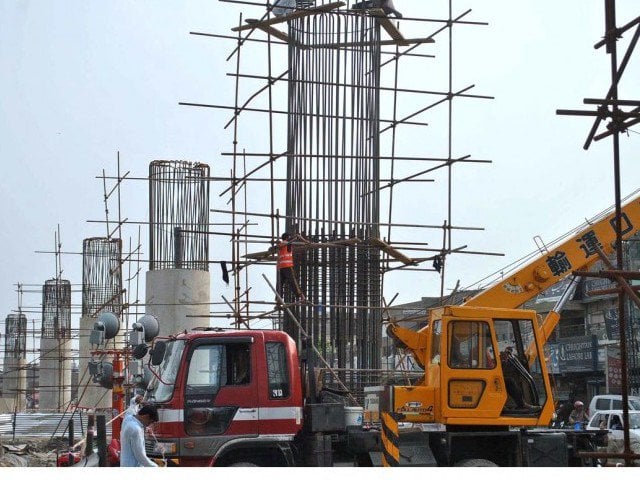
First, the fiscal deficit implies that in the upcoming budget, Punjab will have to take a corrective and conservative stance on development allocations. This inevitable cut in development spending will imply a potential drop in economic growth of the province. In this financial year, the province will have to take a corrective approach and somewhat compromise on growth.
However, the present government and administration are not disheartened by the limited fiscal space, instead in two months, they have carved out softer areas for reform and initiatives, which will not cost much to the exchequer, but will help in building a solid platform to achieve higher growth in future years.
A top priority of the federal government is to produce two million jobs a year for the idle youth of Pakistan, of which 1.1 million jobs will have to be produced in Punjab.
At the current growth rate, Punjab is producing about 850,000 jobs a year. To meet the target, the province will have to generate approximately 300,000 additional jobs. This is a key target as the number of idle youth in the province is approximately 10 million.
The provincial government has started work for better management of the Special Economic Zones (SEZs) in Punjab under the China-Pakistan Economic Corridor (CPEC). The government is finalising an industrial estate development policy which will support joint ventures with the Chinese and other foreign investors in the SEZs for local enterprise growth and employment creation. The policy also covers development of training facilities and employment agencies within these zones to support training and employment of locals.
The government in a very short time has also developed the labour deletion policy. The policy will ensure that all foreign projects/investments recruit local labour, especially at the work delivery level. The policy also supports specific quota for women. The government is evaluating options for setting up an SME enterprise development and youth self-employment fund.
The fund will support SMEs in executing good business ideas that will result in growth and employment creation. It will support access to credit by facilitating credit guarantees and giving out direct loans to trained youth for setting up small businesses, especially in the services sector.
The government has increased its vigilance for accountability and better management of public money. Work has already begun to reform critical aspects of governance that will help the government improve accountability in the use of financial resources, focus more on results and ensure that public money is spent judiciously.
The key areas of reform initiated in the short period include the development of Punjab’s Public Financial Management (PFM) Strategy. This will bring much-needed reforms to ensure that budgets are well prepared and well executed with systems in place to ensure that the money spent impacts real clients of the government – the citizens of Punjab.
Need to work hard to materialise development goal: Buzdar
The government has also initiated debate on developing the Punjab tax policy. Its key objective will be to achieve better fiscal management and turn focus on strengthening the provincial tax collection system.
Electronic pay points
Punjab has a large population base and there are a large number of user taxes that are due but are not collected due to weak systems and little incentives. The government, under the policy and even before that, will be launching electronic pay points for easier payment, collection and verification of tax payments.
This fiscal stimulus will provide much-needed resources to improve the citizens’ experience of public services. The services sector in Punjab contributes close to 60% to the provincial value addition. The Punjab Revenue Authority (PRA) was established for the collection of sales tax on services for the province. The authority has established itself well, but the collection is still significantly below potential.
The government is looking to rationalise tax rates and procedures, so that these do not stifle private sector development, but increase the tax revenue by enlarging the tax base. The PRA is working on a comprehensive tax rationalisation and harmonisation plan, which will increase revenues and not curtail growth.
Finally, in order to ensure full accountability, measurability of results and to ensure learning from past experiences, the government has almost finalised Punjab’s first monitoring and evaluation policy.
The government clearly understands its limitations, both in terms of capability and financial resources. Thus, the main focus of the new government’s strategy is mainstreaming the private sector to lead the growth of economy.
Tourism and hospitality have the potential of being a real growth driver in the province and a high impact area for employment creation. The government will soon be launching the first tourism policy of Punjab. The policy will enable the province to pick up low-cost and effective initiatives to generate momentum in the sector.
Punjab to invite private-sector investment for development projects
All the above initiatives are just a few glimpses of the next five-year development plan being currently worked upon by the Planning and Development Department. In short, the strategy of Punjab in Naya Pakistan may not be about visible metros, bridges or roads, but it is for more strategic reforms that will result in visible change.
Mohammad Usman Khan is part of the Economics Faculty, Lahore University of Management Sciences & Dr M Amanullah is Chief Economist at the Planning and Development Department, Government of Punjab
Published in The Express Tribune, October 15th, 2018.
Like Business on Facebook, follow @TribuneBiz on Twitter to stay informed and join in the conversation.


1719660634-1/BeFunky-collage-nicole-(1)1719660634-1-165x106.webp)

1732276540-0/kim-(10)1732276540-0-165x106.webp)












COMMENTS (4)
Comments are moderated and generally will be posted if they are on-topic and not abusive.
For more information, please see our Comments FAQ